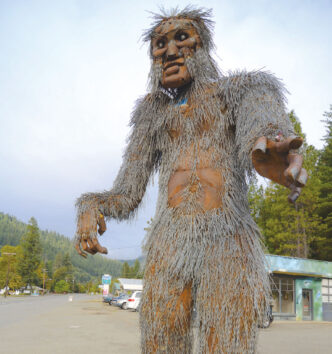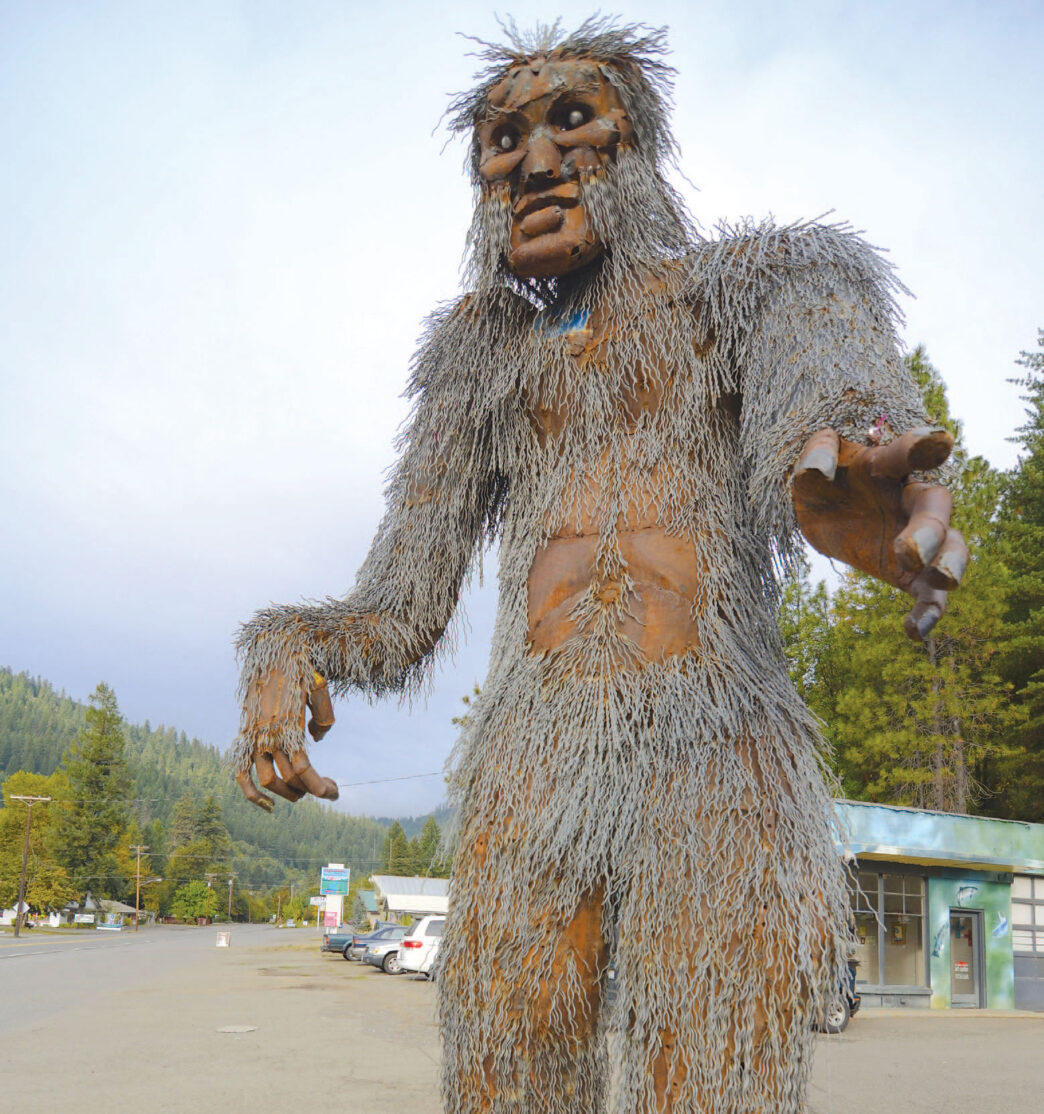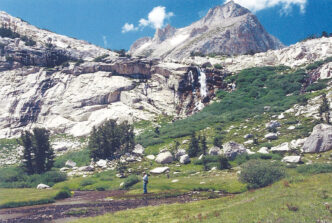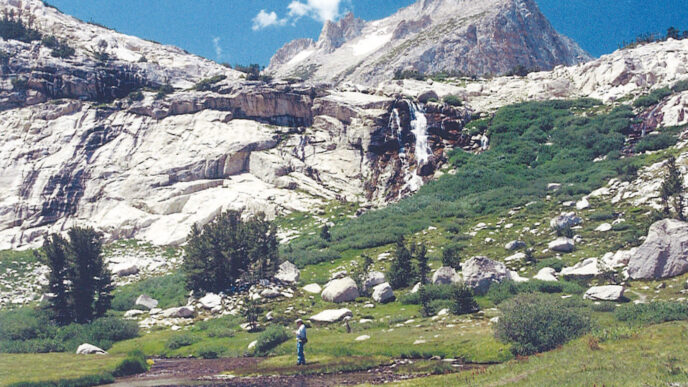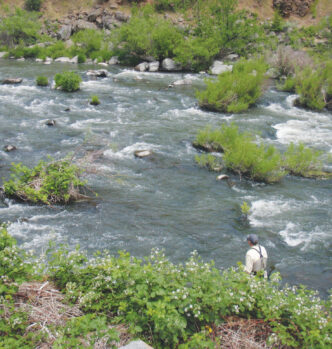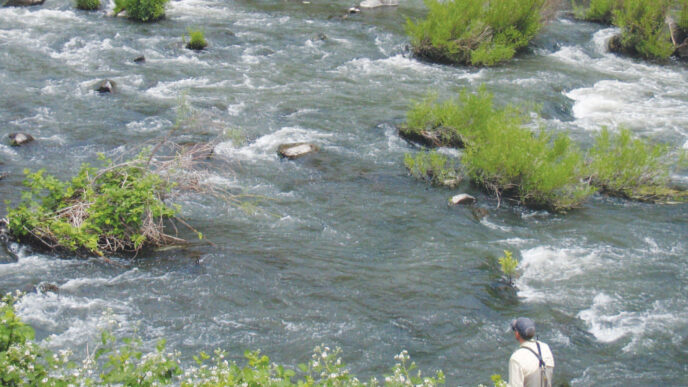In a Central San Joaquin Valley fly shop in the heart of not-steelhead territory, there is a shadowbox on a high front wall near the ceiling, right where it’s sure to remain unnoticed by most everyone. I noticed it. I noticed it because it contained some really simple, elegant, classic Cali steelhead flies. And I noticed it because I recognized the fish in the genuine 1970s-notan-Instagram-made-to-look-1970s photo in the center of it. It was a Klamath River steelhead. You could just tell. I could just tell, anyway. You would have to go to the Klamath and catch some of them to recognize it, and since virtually no one does that, you wouldn’t.
You should. You should because those steelhead are special, and so is that river. The steelhead are special because they are sleek and strong, with long, pointy, missilelike heads and missilelike velocities. The river itself is special because like a special child (to speak politically correctly), it is a huge pain in the ass (to speak politically incorrectly).
First, let me explain exactly to which Klamath River and to which Klamath River steelhead I am referring. I’m not referring to the steelhead of the lower Klamath, the Klamath steelhead you do hear about, the fish that run up Blue Creek between Johnsons and the Pacific — the fish you fish for in August and September. I’m not disparaging those fish in any way. It’s just that I have never fished for them below Weitchpec. And I have never fished the Klamath before the end of September. It’s just too damn hot, and at that time of year, I am still in summertime trout fishing, wading wet, hanging out in the Sierra mode. I don’t know anything about those lower Klamath fish, and I don’t have the wherewithal to do the required research to find out — exhausting research, such as making a phone call to any one of several friends who do fish down low on the Klamath and asking them. I went to college — I’ve done enough research. Hated it back then. And I read on the Internet that the Internet has made research superfluous.
And I’m not referring to the other Klamath steelhead that you hear about that run up to the hatchery at Iron Gate and are fished for in the stretch above Highway 5. Not that there is anything wrong with that or with those (mostly) hatchery fish. But I like to swing flies for steelhead in the classic manner, and that upper river fishes best with nymphs and indicators, not that there is anything wrong with that, either. Except, well, you know.
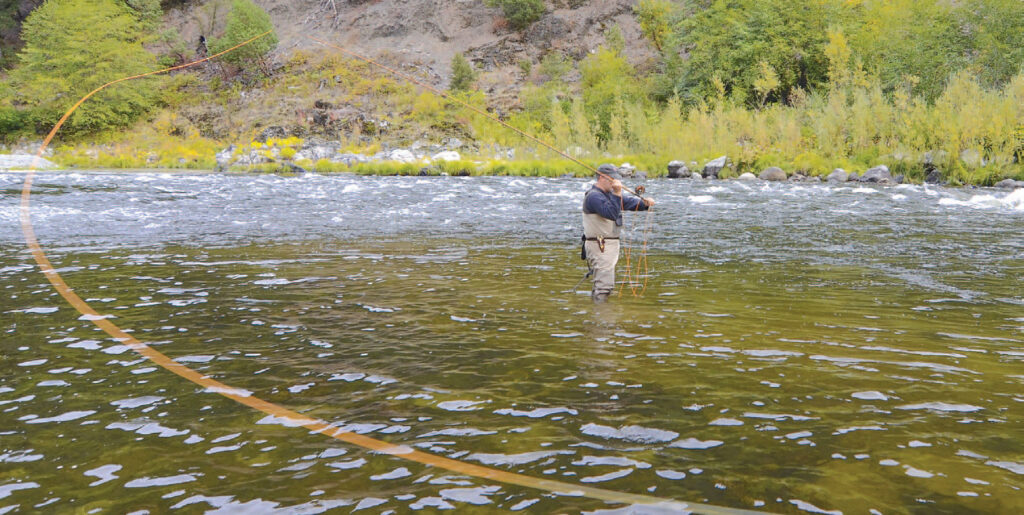
The Klamath I’m talking about is the river that starts below where the Scott River does its débouche and adds some sweet, sweet cattle water. (There is a secret section upstream from there where a few of my friends and I fish late in the season, but we don’t talk about that . . . although I just did. Never mind, nothing to see up there; go about your business; move along.) It ends, the part I’m talking about, anyway, where Highway 96 makes a hard turn south at Weitchpec. This Klamath is the Klamath you don’t hear much about.
Now you might think that by my eliminating from my acceptable fishing territory such large sections of river as the whole lower river and the whole section from Iron Gate to the Scott that there ain’t much river left to fish. You are right. There is only about 90 miles of river left over for the section that I prefer. If you’ve never looked at a map of the area, do so, and you’ll realize that the Klamath is a really long river. And it’s remote, especially that center section that I like to fish.
That’s the good and the bad of it.
On the middle Klamath, it’s hard to find a place to sleep — or a place to eat, for that matter. The major “town” between Highway 5 and Weitchpec is a dank and dour little place named “Happy Camp,” not ironically, but sarcastically, I’m sure. (Sorry Happy Camp Chamber of Commerce, if there is one. The town can use some paint — and windows, and roofing, and. ) There is a restaurant there that serves a decent breakfast, but it usually closes at 5:00 P.M., so it’s not much of an option for dinner. There is a pizza place and a grocery store, and they stay open fully two hours beyond that, until 7:00. So if you are fishing a run any distance from Happy Camp and you want to fish until dark and you also want to eat some dinner, well, you are going to have to haul ass or make your own.
The good news is that there is a motel in Happy Camp and a place with housekeeping cabins, although I’ve stayed only at the motel. And I’ve heard (apocryphally, of course) that they also sell dope by the bale in that town in the fall, if you partake, so that makes the lack of convenient local food all the more alarming. And if you have a credit card, you can get gas in Happy Camp, which is fortunate, because you can’t get it anywhere else from Yreka to Willow Creek otherwise, which is about 150 miles of road, give or take.
There is a place down Orleans way between Somes Bar and Weitchpec obligingly called Steelhead Lodge. I haven’t stayed there, either, but several friends of mine like it. Bring your own food. I’ve heard of only one other place just above Somes Bar that is like a bed and breakfast, and a place up Thompson Creek way whose roadside sign claims the same, but I’ve no experience with them, and neither does anyone I know. You find out and tell me. The store at Somes Bar makes really good coffee and has a supply of good black licorice and really salty beef jerky, if you can live off that, which I try to do.
But who cares about any of that? A hard-core steelhead fisher can sleep in the dirt if the steelhead are there. Unfortunately, the dirt is usually the mud during steelhead season, but that’s a technicality.
About the fish and the fishing, which is why we are here, after all. The middle Klamath in the middle of fall is all about swinging bitchin’ classic flies on floating lines and long leaders. It’s not just me insisting on imposing my preferred technique on the river. Seriously, most of the runs in the Middle 90 would leave a nympher scratching his or her head and wondering where exactly to put a fly. These are big, broad, wide, and long runs. Classic runs. Swinging runs. The way it ought to be, at least in my world.
I know for a fact that there have been a lot of lightweight Spey rods sold in California in the last several years. The Klamath is the place for them — 5-weight and 6-weight Spey rods with matching Scandi lines are the ticket there.
And classic flies are the other tickets. Silver Hiltons, the Chappie, (a Silver Hilton’s red-headed stepchild, literally), the Orleans Barber, Humboldt Railbirds, Burlaps, Brindle Bugs and Mossbacks, Blue-Nosed Arctic Ibexes, and my newfound old favorite, the Steelhead Muddler. The steelhead seem to move into the river above Weitchpec sometime in September, when the water starts cooling down, and don’t get up to the Scott River until about November. Some of the best fishing that I’ve had has been toward the end of November and in the first half of December. So if you go up to the Klamath sometime between the first of October and the last of December, there will probably be steelhead in the middle river. Somewhere.
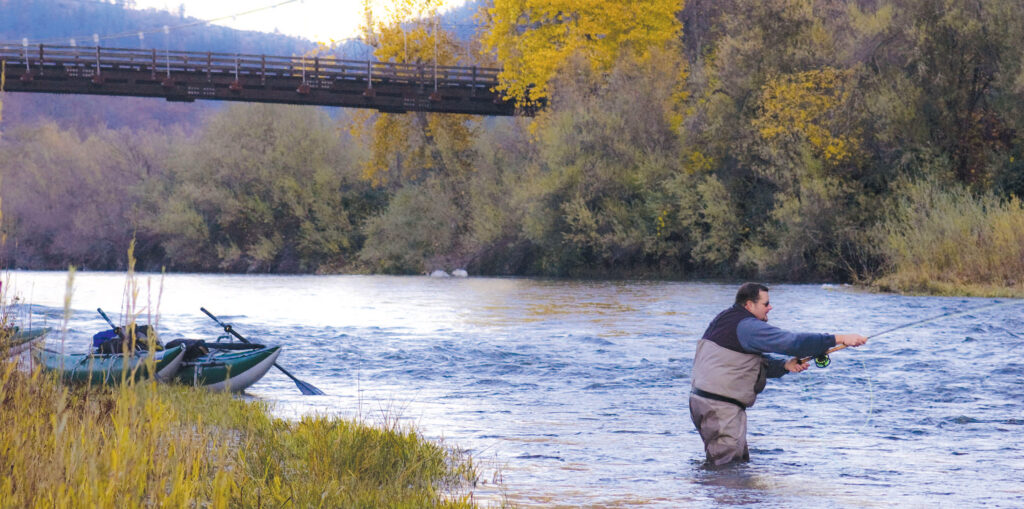
That’s another problem. Not every run will hold steelhead all the time. Here is the solution: move. If you don’t find fish in one run, get in your car, which is almost certainly parked on Highway 96 on the bank just behind you, and drive several miles to another run. If you don’t find fish there, repeat the process. Once you find a fish, you will likely find more than one, if not in that run, then in a run nearby.
What Klamath steelhead lack in size, they make up for in spunk. What I’m saying here is that as steelhead go, these middle-fall, middle-river fish are not giants. And to confuse matters further, in the Klamath, there are steelhead and then there are half-pounders, and which are which is a matter of definition and wishful thinking. A guide friend of mine doesn’t call any fish a steelhead unless it’s 23 inches or larger. I’m not so ambitious. I go by the law, and the law says that if it’s 16 inches or larger, then I have to write it down on my steelhead card as a steelhead. So it is. You will almost certainly catch fish under 16 inches and probably several of them. Finding the ones bigger than that is the task to which we commit. No matter which size fish you find, you will be surprised at their exuberance and relative strength.
(I have heard that there is a winter race of genuinely big fish, like 10, 15 or more pounds, that come into the Klamath sometime in the winter or spring to spawn in the several tributaries of the middle river in the summer. I know that they catch big fish on roe and Wiggle Warts in the winter, and there are usually some photos posted in the Somes Bar General Store to prove the point. It’s hard to fly fish a lot of the time in the winter, however. I’ve tried. Because of the willows that line the banks of most of the runs, you cannot wade if the water level is up significantly. If it is a lowwater winter and you are hardy, then the opportunity is there.) If you are into commitment, and if you want to fish for steelhead the good old-fashioned way, the way that the equipment that you already probably own was designed for, if you like remote solitude and deep river canyons, and if you like wild, mean steelhead, then the middle Klamath is for you, in spite of the difficulty. Remember, if the steelheading there isn’t enough, the dope comes in bales.



